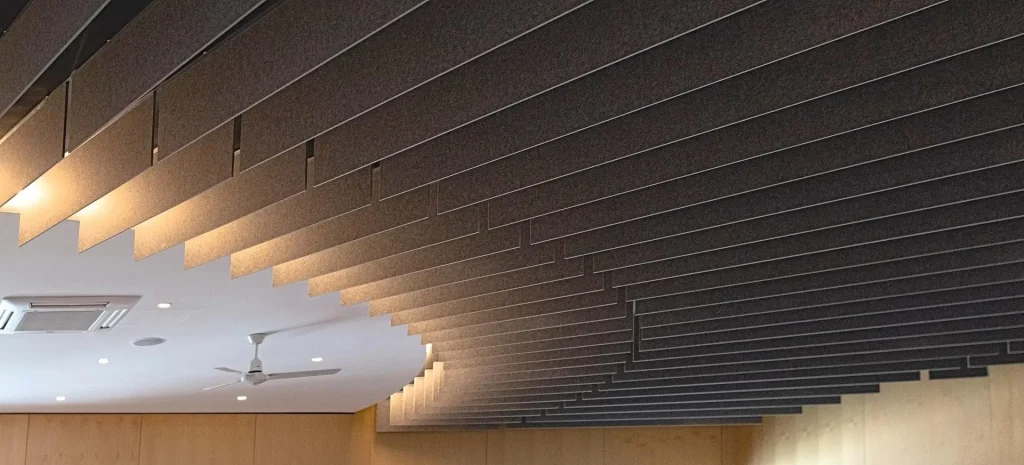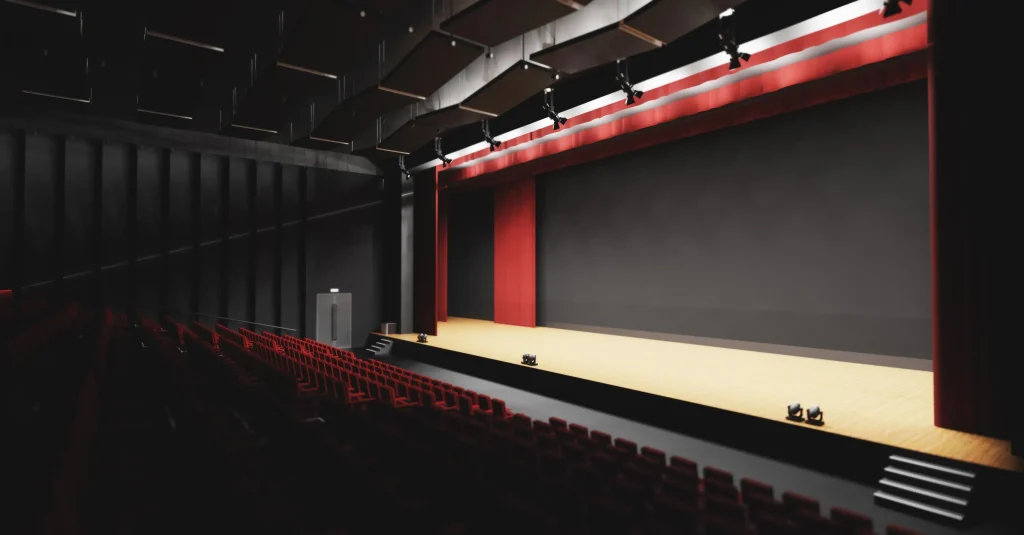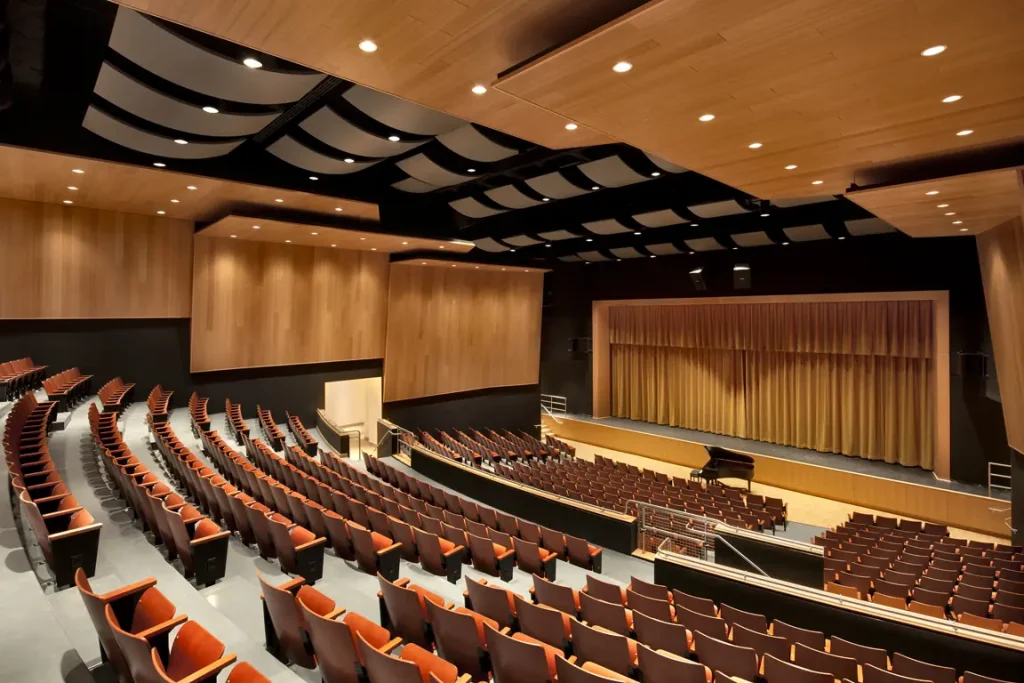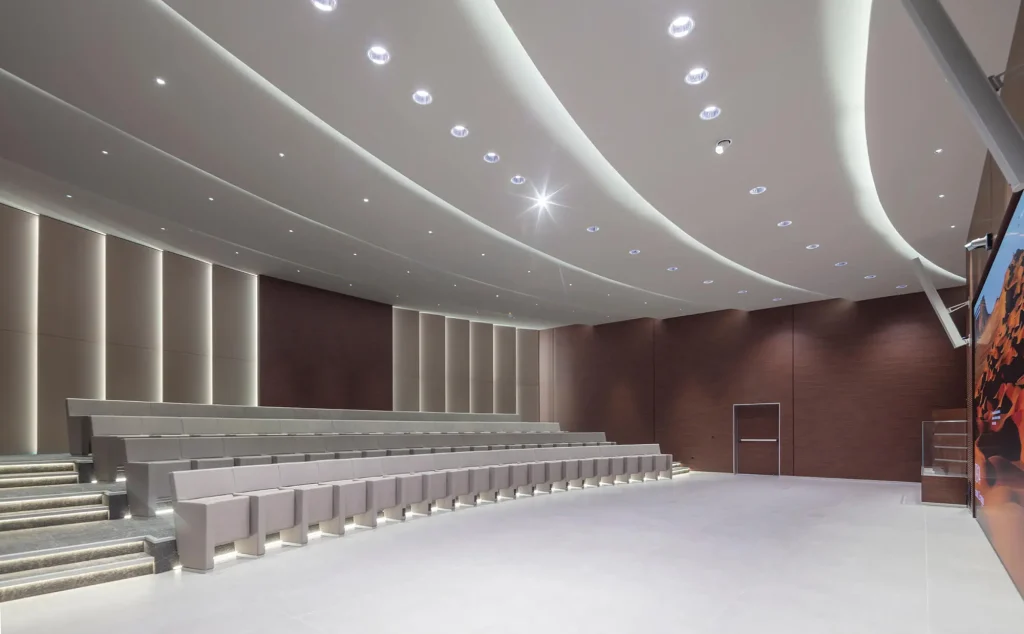In venues like auditoriums and multipurpose halls, acoustics are not just a luxury—they’re a necessity. Whether hosting a musical concert, business conference, theatrical performance, or school assembly, acoustic design for auditoriums directly affects sound quality, audience experience, and communication clarity.
An intelligently designed space can amplify natural sound, reduce unwanted noise, and eliminate echo and reverberation. On the other hand, poor acoustics can distort speech, muffle music, and create discomfort for both performers and attendees.
In this in-depth guide, we’ll explore everything you need to know about optimizing acoustic design for auditoriums and multipurpose halls—from design principles and treatment methods to materials and planning tips.
Why Acoustic Design for Auditoriums Matters
Auditoriums are built to accommodate a wide variety of events, and each type of event places different demands on the sound environment. Here’s why acoustic design for auditoriums is crucial:
1. Clarity of Speech
Whether it’s a keynote speech, a lecture, or a theatrical monologue, speech intelligibility is essential. Poor auditorium acoustics can lead to muffled or unclear voices, causing the audience to miss key information.
2. Balanced Musical Performance
Musical events demand well-balanced reverberation. Too much echo and the sound becomes muddy; too little, and it loses warmth. Acoustic treatment for multipurpose halls must find the right balance between absorption and diffusion.
3. Sound Isolation
External noise from adjoining rooms or streets can easily disrupt performances. Proper auditorium soundproofing ensures that the interior remains quiet and undisturbed.
4. Audience Comfort
When sound levels fluctuate wildly, or there’s noticeable feedback, it causes auditory fatigue. Optimized hall acoustic design enhances listening comfort for extended periods.
Key Principles of Acoustic Design
Effective acoustic design for auditoriums is grounded in several principles:
1. Reverberation Control
The reverberation time (RT60) should match the venue’s primary function. For speech, 0.8–1.2 seconds is ideal. For orchestral music, 1.8–2.2 seconds works better.
2. Sound Diffusion
Evenly distributed sound ensures every seat has a similar audio experience. Acoustic diffusers help scatter sound waves and eliminate dead spots or sound concentrations.
3. Sound Absorption
Absorptive materials like mineral wool, acoustic foam, and fabric panels reduce echoes and minimize flutter.
4. Reflection Management
Controlling early reflections—especially from walls and ceilings—is critical for speech clarity and musical integrity.
5. Noise Isolation
Barrier construction, double walls, and acoustic seals block outside noise and prevent sound leakage between rooms.

Common Acoustic Challenges in Multipurpose Halls
Designing a space for multiple event types adds complexity. Here are common challenges in acoustic treatment for multipurpose halls:
- Excessive echo in high-ceilinged rooms
- Uneven sound distribution in large seating areas
- Bass build-up in corners
- HVAC noise
- Poor sound isolation from adjacent spaces
Addressing these requires a holistic strategy involving layout, material selection, and professional acoustic modeling.
Key Elements of Acoustic Design for Auditoriums
1. Ceiling Design
Sloped or curved ceilings help redirect sound into the audience area. Avoid flat parallel surfaces, which can cause flutter echoes.
2. Wall Treatments
Add absorptive panels or diffusers on side and rear walls to prevent reflections. Custom acoustic panels for auditoriums can be aesthetically integrated into the wall design.
3. Flooring
Carpeted aisles or seating areas can reduce footstep noise and absorb mid-to-high frequencies. For musical performances, partial hard surfaces help retain desired reverberation.
4. Seating Material
Upholstered seating can absorb sound when unoccupied, stabilizing acoustic performance regardless of audience size.
5. Stage Design
The stage shell should project sound into the auditorium. A reflective ceiling or canopy helps reinforce natural acoustics for performers.
Best Materials for Auditorium Acoustics
Choosing the right materials is critical for long-term acoustic performance. Here are the best materials for auditorium acoustics:
| Material | Function | Notes |
| Acoustic Foam | Sound absorption | Ideal for walls and ceilings |
| Mineral Wool Panels | Low-frequency absorption | Great for bass traps and walls |
| Fabric-Wrapped Panels | Mid to high-frequency absorption | Aesthetic and functional |
| Diffusers | Sound scattering | Used to break up sound waves |
| Acoustic Curtains | Temporary absorption | Good for adjustable acoustics |
| Mass Loaded Vinyl | Soundproofing | Used for walls and doors |
| Perforated Wood Panels | Balanced absorption/diffusion | Often used in concert halls |

Auditorium Soundproofing: Keeping Sound In (and Out)
Soundproofing goes beyond treatment—it focuses on noise control in large venues by preventing sound transmission. Here’s how to soundproof an auditorium:
1. Wall Construction
Use double or staggered-stud walls with air gaps and insulation for optimal sound isolation.
2. Doors and Windows
Install solid-core acoustic doors with gaskets. Use double-glazed or laminated glass for windows.
3. HVAC Noise Control
Choose low-velocity ductwork and install acoustic baffles to prevent humming or vibration noise from reaching the audience.
4. Floating Floors
For venues near vibration-heavy zones (like train stations), floating floor systems can help minimize impact sound.
Acoustic Flexibility: Designing for Multipurpose Use
Multipurpose halls must accommodate a wide range of acoustic needs. The solution? Variable acoustics. This can include:
- Retractable acoustic curtains
- Movable wall panels
- Motorized banners
- Electronic enhancement systems
By adapting the acoustics to the event type, you maximize usability without compromising sound quality.
Professional Acoustic Modeling and Simulation
Before construction or renovation, use 3D modeling tools like EASE or Odeon to simulate how sound behaves in your space. This lets designers adjust surfaces, materials, and layout before installation—saving time and ensuring performance.
Tips for Effective Hall Acoustic Design
- Involve Acoustic Consultants Early
Integrating acoustic design during the architectural planning phase ensures better results and avoids costly retrofits. - Balance Function and Aesthetics
Use artistic acoustic panels, ceiling clouds, and integrated designs to maintain visual appeal. - Think About Maintenance
Choose durable, easy-to-clean acoustic materials—especially in public or high-traffic spaces. - Test the Space Post-Installation
Conduct an acoustic performance test after setup to validate outcomes and fine-tune where needed.
Conclusion: Investing in Quality Acoustic Design
Whether you’re designing a school auditorium, civic center, or event space, acoustic design for auditoriums should never be an afterthought. It enhances clarity, improves audience engagement, and ensures the space is versatile and professional.
By combining thoughtful planning, high-performance materials, and expert insight, you can transform any large venue into an acoustically optimized environment that meets the demands of today’s multipurpose spaces.

Frequently Asked Questions (FAQs)
What is the ideal reverberation time for an auditorium?
For speech, aim for 0.8–1.2 seconds. For music, 1.8–2.2 seconds works best.
How can I improve acoustics in an existing auditorium?
Add acoustic panels, bass traps, and use sound-dampening curtains. Consider ceiling clouds and floor carpeting as well.
Are acoustic panels enough for soundproofing?
No. Acoustic panels absorb sound within the room but don’t block sound from entering or exiting. For soundproofing, use barriers like mass-loaded vinyl and insulated walls.
What’s the difference between absorption and diffusion?
Absorption reduces echo by soaking up sound. Diffusion scatters sound waves to eliminate hotspots or dead zones.

